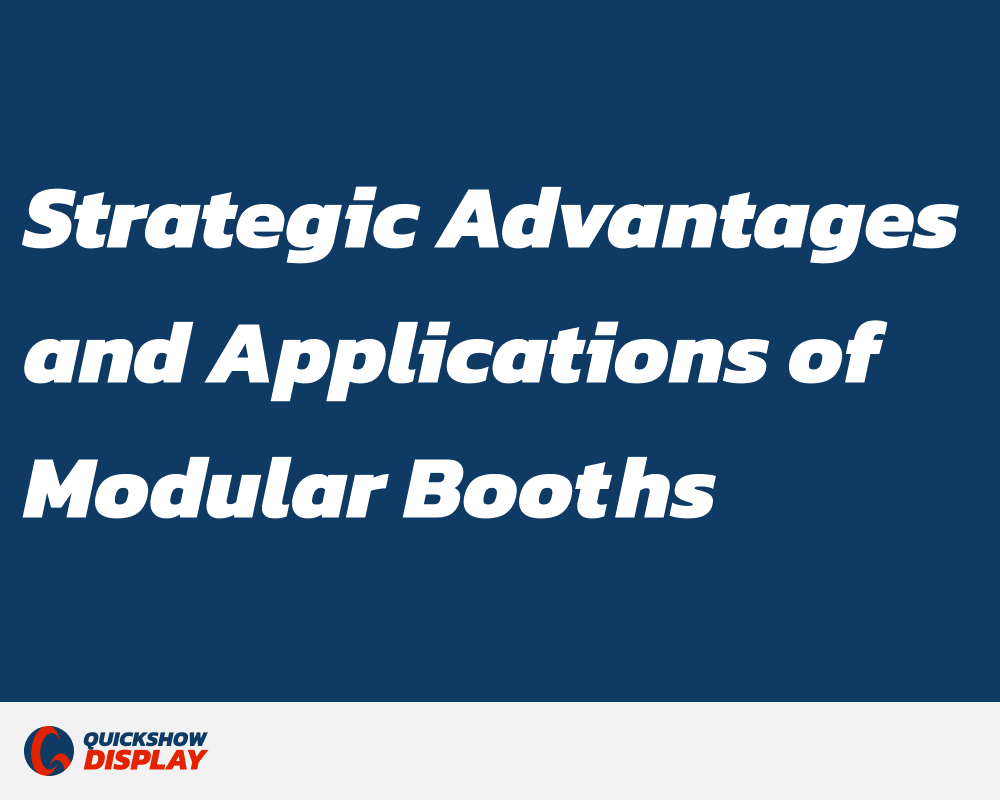The Flexible Exhibition Solution: Strategic Advantages and Applications of Modular Booths

In an era where experiential marketing dominates consumer engagement strategies, trade shows and exhibitions continue to be crucial platforms for brand visibility and lead generation. However, the traditional approach to exhibition marketing is undergoing a significant transformation. Companies are moving away from single-use, custom-built exhibits toward more strategic, sustainable solutions that deliver long-term value. Modular exhibition systems represent this shift, offering businesses the unique opportunity to maximize their exhibition impact while maintaining financial prudence and operational flexibility.
Let's explore why businesses are switching to modular solutions and how you can leverage this smart approach to exhibition marketing.
Understanding Modular Exhibition Systems: Beyond Basic Assembly
Modular exhibition systems comprise engineered components designed for infinite reconfiguration and reuse. Unlike traditional exhibits that are built for a single event, modular systems are conceived with longevity and adaptability at their core. These systems typically include:
-
Structural frameworks using aluminum or composite materials
-
Interchangeable graphic panels with various mounting systems
-
Integrated lighting and electrical components
-
Modular furniture and display accessories
-
Digital integration capabilities
The true innovation lies in the engineering precision that allows these components to work together seamlessly while maintaining structural integrity across multiple configurations and uses.
Why Smart Companies Choose Modular
1. Long-term Cost Control and Enhanced ROI
The reusable nature of modular systems eliminates the need for custom-built exhibits for each event. By simply replacing graphics, adjusting structures, or updating visual elements, companies can refresh their exhibition presence while significantly reducing long-term setup and material costs.
2. Adaptability to Various Venue Conditions
Modular systems demonstrate remarkable flexibility in accommodating different exhibition spaces and layout requirements. In standard 10x20 foot spaces, they enable the creation of multi-level displays with engaging visitor pathways. For inline booth configurations, they facilitate open designs that enhance visual appeal and improve traffic flow.
3. Brand Consistency Meets Content Flexibility
While maintaining core brand identity, modular systems allow quick updates of graphics, digital content, and interactive elements to align with specific event themes or campaign focuses. This ensures consistent brand messaging while enabling precise content targeting.
Recommended Modular Solutions
1. Panel-based Systems
Ideal for creating clean, professional backdrops, these systems feature interchangeable graphic panels that can be easily updated between events. Look for magnetic or tension-based systems that allow for quick graphic changes without tools. Like this:
2. Modular Display Counters and Tables
Integrated display solutions that combine functionality with branding opportunities. These units often incorporate built-in lighting, storage, and display cases, creating perfect product demonstration stations.
3. Digital Integration Modules
Purpose-built components designed to seamlessly incorporate screens, tablets, and interactive technology. These modules typically include built-in cable management and power solutions for a clean, professional appearance.

Discover More Modular Components
Versatile Applications of Modular Exhibits
Optimizing Standard Booth Spaces
Modular exhibits offer particularly effective solutions for standard inline booths. Their adaptable nature allows exhibitors to create open yet engaging environments even within compact aisle-side spaces.
Adapting to Diverse Event Needs
The flexibility of modular systems makes them suitable for a wide spectrum of occasions beyond conventional trade shows. From product launches and industry conferences to career fairs and corporate events, the same core components can be reconfigured to serve different purposes.
Creating Immersive Brand Experiences
Modern audiences seek memorable experiences rather than just product information. Modular exhibits meet this expectation by enabling seamless integration of digital elements, interactive features, and immersive technologies.
Conclusion
Modular exhibit systems represent the evolving future of event marketing, successfully balancing brand customization with practical business considerations. They provide companies with a sustainable solution that adapts to changing marketing needs while maintaining cost efficiency. As brand communication continues to prioritize experiential engagement, investing in modular exhibits becomes more than just an event strategy—it's an essential component of comprehensive brand building.

